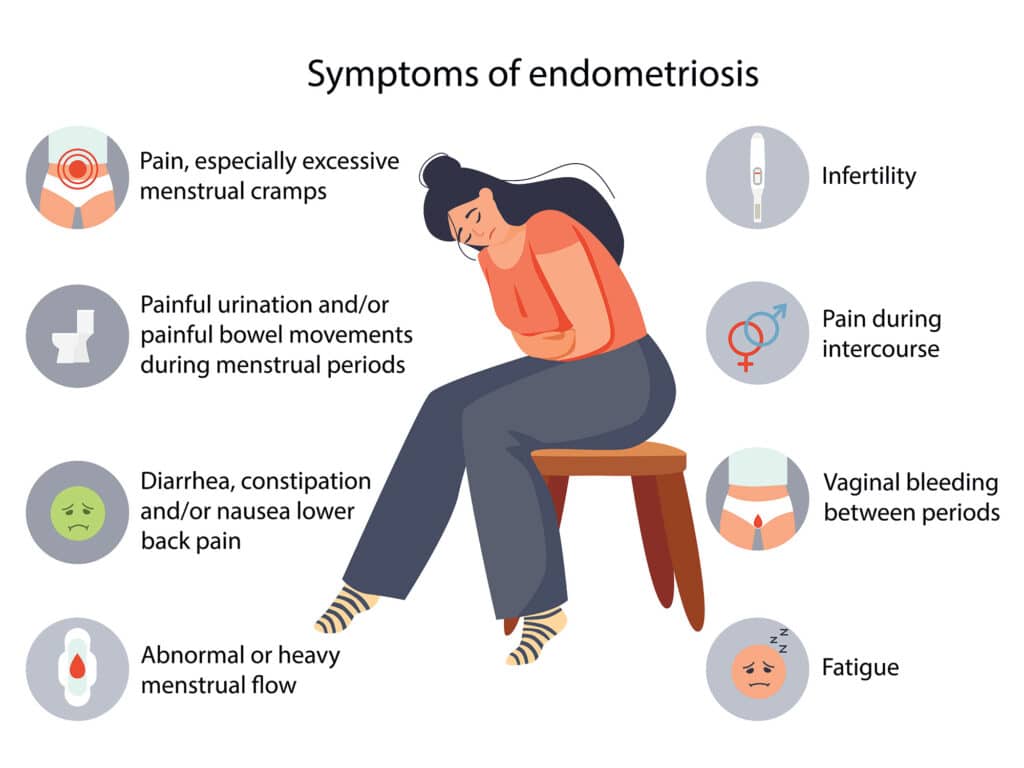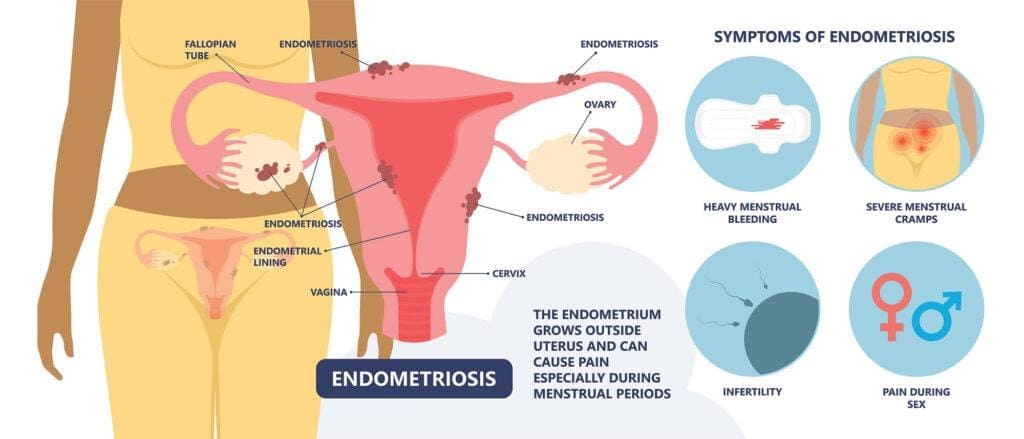Experts predict that approximately 10 percent of women between the ages of 15 and 44 struggle with a condition called endometriosis. Unfortunately, this condition often causes a lot of pain, especially when someone is experiencing a flare up. But what exactly is an endometriosis flare up? What are the symptoms and what causes this to happen?
Below, we take a closer look at all that you need to know about an endometriosis flare up so that you can get the most effective treatment possible. With preventative measures and the right pain management, an endometriosis flare up can be a little easier to handle.
What Are the Symptoms of an Endometriosis Flare Up?
To start, we must understand what endometriosis is. Endometriosis occurs when endometrial tissue—normally found within the womb—grows outside of the uterus. The fallopian tubes, ovaries, and the exterior of the uterus are the most common places for endometriosis to occur.
For people who get a menstrual period, the endometrial tissue sheds each month, usually without much issue (though, of course, period pain can be its own challenge). But in cases of endometriosis, this tissue cannot shed easily because of its location. Thus, it can cause a lot of discomfort, pain, and irritation wherever it is located.
Most commonly seen symptoms of endometriosis would be:
- Painful periods
- Pain with sexual intercourse
- Chronic lower back pain
- Abdominal bloating (also known as endo belly)
- Spotting in between periods
- Blood in urine or with bowel movements
An endometriosis flare essentially encompasses all of the regular symptoms of endometriosis, but the symptoms temporarily become more severe. For many people, this means dealing with more pain. For those who have endo, this leaves them wondering if they can prevent it before it happens. So, what exactly causes an endometriosis flare and can it be avoided?
What Causes An Endo Flare?
You’ll know if you’re in an endo flare by the symptoms, which, as described above, get worse during a flare-up. Experts aren’t sure exactly why certain factors trigger an endometriosis flare, but they do recognize patterns in patients who have these flares frequently. Oftentimes, endo flares happen because of these things:
- Inflammation—The driving force behind endometriosis symptoms is the inflamed tissue. The more inflammation, the more pain there typically is. That said, there are specific things that can worsen inflammation throughout the body. These include eating a lot of greasy or sugary foods that can contribute to the swelling of tissue throughout the body. Furthermore, drinking alcohol and caffeine are two major contributors to inflammation. Though changing your diet will not cure your endometriosis, it’s possible that avoiding these inflammation triggers can keep the pain and other symptoms at a more manageable level.
- Lack of sleep—As with any medical condition, one of the most important things you can do to feel good is to get enough quality sleep at night. But this is much easier said than done, especially if you live with chronic pain. Unfortunately, pain can greatly disrupt your sleep cycle and even cause bouts of insomnia. Implementing strategies such as going to counseling, stretching before bed, and utilizing other pain management techniques can sometimes help to improve the quality of your sleep. This, in turn, will assist your body in feeling stronger and more equipped to handle the inflammation and all other symptoms that come with endo.
- Stress—Many chronic conditions become exacerbated by stress. Whether this is because of the body’s physical response to stressors or hormones that are released during times of distress, it’s clear that there is a connection between increased stress and increased pain levels. This goes for people with endometriosis as well. Stress, depression, and other mental health struggles can often bring out the symptoms of an endo flare and make it harder to recover from one. Thus, people with endometriosis must work to keep their stress levels reduced whenever possible. Certain interventions like cognitive behavioral therapy and even talking with others who have endometriosis or more chronic conditions can be helpful in releasing excess stress before it begins to impact the body.
It’s important to note that this list is not extensive—rather, it’s here to serve more as a general guide as to what you might expect to see with an endo flare. This can also give you an idea of where to start when it comes to avoiding certain things. But as every patient with endo knows, preventative measures aren’t 100 percent effective. Having the right treatment plan in place for endometriosis flares is essential to coping with this condition.
How Can This Be Treated?
The reality is that an endometriosis flare up can be excruciating. In addition to preventative measures, there are different treatment plans that can help you to manage the pain and all of the other symptoms that come with endo. There are usually two different approaches to endo pain—short-term solutions and long-term planning.
Long-term pain management approaches are crucial to keeping you comfortable and also preventing further damage from occurring as a result of this condition. One option would be taking birth control pills, which can help regulate the hormones that contribute to the growth and irritation of endometrial tissue. Another option would be to take nonsteroidal anti-inflammatory drugs (NSAIDs) to help decrease the amount of inflammation.
In some cases, surgery is necessary to manage this condition. A medical professional can remove areas of endometrial tissue to relieve some of the pain. However, the tissue can sometimes grow back and, with it, the symptoms return.
Unfortunately, some women with endometriosis struggle with fertility because of the inflamed tissue. The treatment options mentioned above might not be right for you if this describes your situation. If you are currently trying to get pregnant or hope to in the future, be sure to talk to your doctor about endometriosis treatments that will not impact your family planning.
If you are in an endo flare and need immediate relief, try:
- Applying heat to the painful areas
- Taking pain medication as prescribed by your doctor
- Doing gentle, tolerated exercises and stretches to relax the body
- Practicing mindfulness
- Getting support from people who understand your pain
If you are currently in an endometriosis flare, know that you’re not alone and you’re not without hope. Though there is no cure for endometriosis, pain management is possible. Learn more about this condition and how to manage an endo flare by joining the Pain Resource Community and learning from others who are also working to manage their pain.
What are your thoughts on this article?
Please share in the comments below!
What topics related to depression would you like to see us cover next?
Email us at info@painresource.com with your ideas.
Did you know we have different groups for different conditions?






